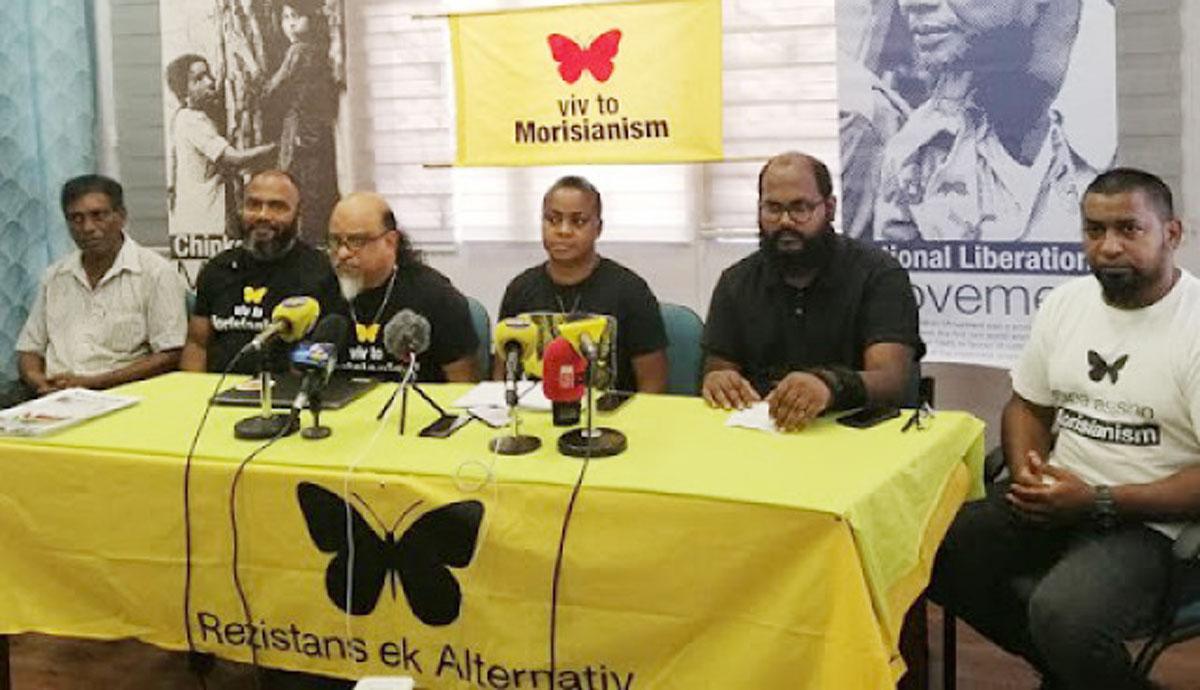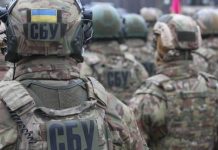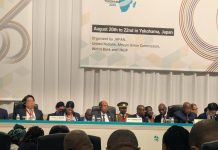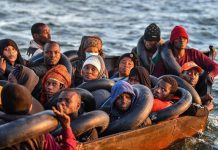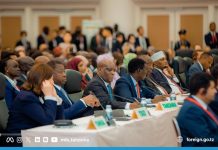Africa-Press – Mauritius. Kugan Parapen told a radio station this week that Resistans ek Alternativ (ReA) favored a rapprochement with the PTr-MMM-PMSD alliance. This rapprochement has been in the news for a while, Ashok Subron himself having made a statement along the same lines a few weeks ago.
Political observers will be surprised by this statement. Resistans ek Alternativ is a far-left party which was built in constant opposition to the ruling parties which are the PTr, the MSM and, to a lesser extent, the MMM and the PMSD.
Beyond ideological incompatibilities, there is a profound incompatibility on economic, social, institutional and security issues. For example, Resistans ek Alternativ is fiercely opposed to the “bestloser” system.
They have been campaigning for years for an abolition of this system which they consider to be an obstacle to the development of “Mauritianism” (whatever the meaning given to this term).
We are all aware of the legal battle led by ReA for several years regarding this issue, the party having even refused to field candidates for elections so as not to betray their ideas.
In fact, Resistans ek Alternativ is a unique party in the Mauritian political landscape. This party has managed to find a place of choice in the debate of ideas without however succeeding in making a major electoral breakthrough.
It is thus undeniable that its members contribute to the life of ideas in an extremely moribund local ideological landscape: it is precisely the merit of this party to contribute to a certain intellectual life. And we must give them that.
Nevertheless, even if their intellectual contributions are not always realistic and pragmatic, from the point of view of many political observers, this makes them an interesting party as long as we are in the debate of ideas; moreover, this party has not demonstrated any real capacity to govern, undoubtedly due to a lack of pragmatism in the face of major economic and security issues in particular.
So we can only guess what a government including Resistans ek Alternativ will deliver if the opposition alliance were to win the next elections. Let us just imagine a Council of Ministers, also including the various advisors from the different sides making up the government alliance, where Navin Ramgoolam and Xavier Duval would discuss the security of the Indian Ocean or the liberalization of the economy with Ashok Subron, and this , with Paul Bérenger as referee.
.
. There are undoubtedly reasons why certain political parties are made to govern and others are not. This is also democracy, that is to say the space for the expression of all political sensitivities.
And, in the democratic world, there is a range of parties: from the most serious to the most irrational, from the most eccentric to the most absurd, from the most useless to the common interest to the most dangerous too.
.
. Has Russia already won the war in Ukraine? A long interview given by Nicolas Sarkozy to a French media ignited the powder this week.
The former President of the French Republic affirmed in this interview that France and the European Union had to stop blindly following the demands of Vlodimir Zelensky and that it was imperative to return to normalized relations with Vladimir Putin and the Russia. These words did not fail to stir up political and media circles.
Former Prime Minister Lionel Jospin and Senate President Gérard Larcher condemned Sarkozy’s remarks, accusing him of apologizing and minimizing or “underplaying” Russian aggression on Ukrainian territory, in addition to being in perfect contradiction with the policy of the French Republic on the Ukrainian question.
Why then this exit from Sarkozy? Is this a risky exit, as he knows, or is he trying to open the eyes of European decision-makers to the current state of the conflict in Ukraine? As a reminder, after months of mobilization near the border, the Russian army invaded Ukraine on February 24, 2022.
The latter quickly progressed towards kyiv without ever being able to take the Ukrainian capital. At the same time, Ukrainian forces have mobilized – with the help of neighboring countries and NATO – to push Russian forces out of its territory.
The Ukrainian counter-offensive was initially successful, with the Ukrainian army retaking areas in the northeast of the country and forcing the Russian army to retreat on the Eastern Front.
Ukraine launched a massive counter-offensive, throwing all of its current forces into battle, in June this year with the aim of retaking the Eastern Front and sending the Russian army back to Russia.
This massive counter-offensive, which benefited from significant logistical support from Ukraine’s Western allies, has not had the expected effects for the moment.
On the contrary, the Russians seem more solid than ever on the Eastern Front. The question is now asked: Will the Ukrainian army be able to retake this part of its territory from Russia? Some very serious military analysts seem to think not. Even worse.
If Ukraine continues its effort, it risks finding itself in a situation where its military capabilities will be so weakened that the Russian army will be able to resume its march westward and conquer even more territory.
However, the Ukrainian army has benefited from extremely generous aid in terms of weapons. Missiles, tanks, helicopters, drones and a promise of upcoming delivery of F16 fighters. So how is it that she seems cornered today? The reason is very simple. Any war must be supported by an industry capable of producing weapons.
Developing these production capacities requires extremely significant investments and mobilizes resources that very few countries are today capable of supporting, especially after the global economic crisis.
In fact, it appears that Ukraine’s arms and ammunition supply capacity has almost reached its end for a significant portion of its Western allies. Belgium, for example, recently emptied its ammunition reserves to support the war effort in Ukraine and now finds itself with an ammunition shortage that will cost nearly €6 billion to fill.
The same goes for French tanks and missiles, with dramatic reductions in stocks and a worrying inability to produce more. At the same time, Russia – preparing for this war for several years – has weapons factories running at full capacity and, currently, their production capacities far exceed those of European countries.
For example, Russia fires on average 4 times more ammunition than the Ukrainian army without its ammunition reserves being affected. Furthermore, Vladimir Putin has finalized military agreements with China and North Korea (which is a very large arms producer).
Furthermore, the F16s promised to the Ukrainian army are old generation aircraft, which will be no match for the fighters used by the Russian army, also knowing that the Russian army has a much larger number of hunters.
In fact, it appears that Russia is winning this war by the simple fact that they have far more military capabilities than Ukraine. And once again, it turns out that acquiring military capability requires having a real economic strategy that underpins the war effort.
Thus, if we take into account this aspect of “the economics of war”, it is not insignificant to assert that Russia has more or less already won the war.
Or rather, that the Russian position is so solid that all Putin has to do is wait quietly until Ukraine’s military capabilities shrink and Zelensky knocks on his door to sign an armistice.
.
.
In fact, we see the collapse of the entire Western strategy in the face of Russian resilience, a resilience that Napoleon and Hitler themselves failed to break, we must never forget.
The West had relied on a combination of economic sanctions and military aid to Ukraine. Some Western policymakers believed Putin’s Russia would not survive the winter of 2022, as French Economy Minister Bruno Lemaire said Russia would “soon be wiped out.
” It was in March 2022 but nothing happened. The Russian economy has withstood the shock. Even better, it will show growth of just under 1% this year, with forecasts exceeding 3% for next year.
By consolidating his eastern allies, such as China, India and recently North Korea, and by deploying an extremely effective diplomatic strategy on the African continent, Vladimir Putin has defied all predictions.
In addition, he took the opportunity – in passing – to consolidate his power over the Kremlin by purging undesirables like Yevgeny Prigozhin. Today, the Ukrainians therefore seem to be caught in a real trap.
How can we get out of this quagmire when the master of the chessboard shows no eagerness to do so? The strategy currently favored by Ukrainian forces appears to be drone attacks.
By attacking Russian cities and civilians with drones, the Ukrainian army has adopted the terrorist tactic of turning the Russian people against their leaders.
By constantly bombing, Zelensky no doubt hopes to create fear and exasperation among Russian civilians, which could lead them to rise up against the war and thus force Putin to back down.
But nothing is less certain. According to the latest polls, almost 75% of Russians support the Russian special operation in Ukraine. How can we make peace now? What is the exit route? In reality, this path does not really exist without one side agreeing to unfold in front of the other.
And the leaders of the most powerful countries in the world are well aware of this, which explains why the Ukrainian issue was discussed extremely timidly during the recent G20 summit.
Thus, Nicolas Sarkozy could be right when he implores French decision-makers to re-establish dialogue with Putin and to no longer follow Zelensky’s demands to the letter.
These two men seem to be caught in a spiral that has no way out. However, this exit is absolutely necessary in order to avoid the worst. G20 Summit in New Delhi: the vision of India’s third way is taking shape
The G20 summit held last weekend crowned the grouping of the richest countries in the world this year with the Indian presidency. The G20 has taken a serious hit since the Covid pandemic, in particular due to the perception of an inability of these countries to deliver on the promises made in terms of vaccine distribution, etc.
As a result, not many people expected much from this summit, which looked more like a routine event than a summit where big announcements are made. Nay! India had prepared its move perfectly well and this G20 summit already appears to be one of the most important in recent years.
Assuming and fully playing his role as president of the group, it is clear that Narendra Modi (supported by his Foreign Minister Subrahmanyam Jaishankar) has done considerable work for several months in order to negotiate a certain number of agreements which were announced during the top.
The most important agreement, the one which will undoubtedly have the most significant impact over time, is the announcement of a logistics corridor linking India to Europe, via the Arab Gulf.
This new corridor will bypass the obligation to pass through the Suez Canal in order to connect India and Europe. Concretely, this represents a time saving of almost 40% on supply chains, also allowing very serious energy savings and a significant impact on the price of transport.
This corridor immediately appears as a direct alternative to Xi Jinping’s China “Belt and Road Initiative” (BRI), which was a notable absentee from the G20 summit. Even more, such a corridor could lead certain European countries to withdraw from the BRI since a credible alternative is being put in place.
For example, the Italian Prime Minister, Giorgia Meloni, has already informed Chinese Prime Minister Li Qiang of the intention of Italy’s withdrawal from the BRI, which would represent a hard blow for the Chinese project in relation to Europe, especially that other countries could follow suit.
Indeed, the BRI has been seriously losing momentum for two years, both in terms of Chinese investments on the African continent and those in the Indian Ocean basin.
This new corridor represents a much smaller investment than the BRI projects since it will rely on already existing and operational ports and transit points.
It will be necessary to invest in an increase in transit capacities and volumes but the architecture is already there, hence the fact that French President Emmanuel Macron insisted on the fact that this new logistics corridor should be operational as soon as possible.
The African Union, Françafrique and cordial agreement with MBS The other major announcement of this summit was the invitation to the African Union to join the G20.
This invitation, led by the Indian government, was even spectacularly staged by a speech by Narendra Modi inviting Azali Assoumani, the current President of the African Union, to come and take a seat at the round table with the other members .
The long embrace between the two men before Assoumani took his seat was one of the highlights of this summit. By being the “driver” which allowed the African Union to now have a place at the table of the most powerful countries in the world, India has sent a clear message of friendship to the African continent.
With the collapse of Françafrique, with the retreat of the United States, with the penetration of China and Russia on the continent, India is clearly positioning itself as an alternative in terms of cooperation.
We will see what happens in the coming decades. . . The last major announcement made this weekend is the creation of the “Global Biofuels Alliance” of which the Republic of Mauritius is a founding country.
This alliance aims to advance oil exit projects by promoting biofuels and biomass. The objectives of this alliance have not yet been clearly defined and, like any new creation of this kind, it will have to be made to work. But it is clear in this case too that India is sending a message to the world.
While the country had been singled out for its refusal to back down on the use of coal at COP27, an energy source which constitutes nearly 55% of its energy needs, Narendra Modi presents a project which will facilitate the exit from coal for a number of countries.
Biofuels do not constitute a carbon-free energy source but constitute a credible and economically viable transition energy to move towards carbon-free energy. It will be particularly interesting to know what comes out of this for the Republic of Mauritius.
Finally, the summit also saw a particularly cordial understanding between Narendra Modi and Mohammed Bin Salman Al Saud, the crown prince of the Kingdom of Saudi Arabia. India and Saudi Arabia are partners in the new logistics corridor announced during the summit, and Saudi Arabia has just joined the BRICS.
Consequently, agreements are multiplying between these two countries and their two leaders have displayed a particularly cordial and friendly understanding, MBS even following the summit weekend with an official visit to India.
These two countries signed a series of eight extremely important “Memorandum of Understanding” (MoU) beyond the announcement of the logistics corridor.
These MoUs concern in particular cooperation in the fields of energy, new technologies, agriculture and the pharmaceutical industry, among others. Thus, India succeeded in its G20 summit.
The essential issue for Narendra Modi and the Indian government was for India to emerge as an emerging leader capable of taking leadership of global initiatives and capable of showing another way to the world, the famous third way being between the United States- United and China.
From this point of view, the G20 summit sent the signals and symbols that matter. It now remains to make the announced initiatives work. * * * Apple and Huawei: another incarnation of the opposition between the United States and China
As Apple prepares to launch its latest generation iPhone, an event that generally causes buzz around the world, it is the Chinese giant Huawei that is currently in the news. It has already been a few years since tensions between the United States and China had crystallized around Huawei and the Chinese development of 5G.
These same tensions had provoked a war for control over semiconductors, Taiwan being the world’s leading producer of these “chips” essential to the proper functioning of digital technologies.
With repeated threats of invasion of Taiwan by China, the world leader in this field – the Taiwan Semiconductor Manufacturing Company (TSMC), the largest independent semiconductor foundry – has even decided to open a production center on the ground American in order to secure the production of semiconductors.
Even more, a commercial strategy had been put in place in an attempt to wean China off the supply of semiconductors, the idea being to slow down the productive capacities of Chinese companies, with Huawei in the lead.
In addition, Apple and Samsung subsequently closed their Chinese factories and relocated them to India. Moreover, the new iPhones will be the first to be produced in India.
All this aimed to bring the Chinese giants of new technologies to their knees. But it didn’t happen. Huawei has just released the latest of its smartphones, the main feature of which is to have used semiconductors produced in China.
This is an exceptional performance, it should not be underestimated, especially since the technical capabilities of the latest Huawei should compete with, or even exceed, those of the latest iPhone, positioning itself as a credible alternative and a direct competitor.
So, obviously, Huawei suffers from the ban on sales and distribution in certain territories, but the alternative markets are immense and should allow the Chinese giant to consolidate its position, especially since the Chinese government recently sent a clear message by banning the use of Apple products by all state employees.
In all cases, this rivalry between Apple and Huawei indeed reflects extremely complex geostrategic and sovereign interests and reveals another side of the conflict between the United States and China.
For More News And Analysis About Mauritius Follow Africa-Press


